Co-Creating Under the Summer Sun!
One of the delightful things about our work is living in harmony with the cycles of nature, which means that how we do things, and what we do, changes with the seasons, as the landscape does, quite dramatically.
Although we enjoy trying out different ways of organizing our farm routines, the whole revolves around building soil & biodiversity by supporting the vital cycles of all the creatures (animal, vegetable and mineral) that we are so privileged to be sharing this piece of Paradise with.
Interns & Designs
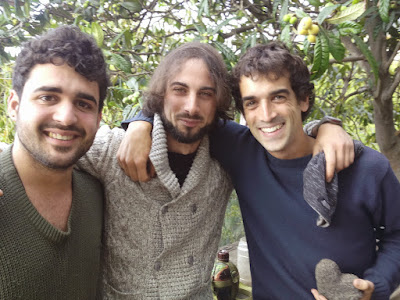 In this newsletter we will be looking at the work of 5 of our Students & Interns who have been with us lately.
In this newsletter we will be looking at the work of 5 of our Students & Interns who have been with us lately.
We've now been trying out the new EcoEscuelas network project since November, perfecting the monthly iPDC program as we go.
This
has been very satisfying as having smaller groups means the students
can take real responsbility for actually designing a variety of hands-on
projects whilst they take the classes on site.
See Academy Newsletter
for an expanded article on their Internship and their design presentations
for an expanded article on their Internship and their design presentations
Daniele & Fer
Daniele from Italy stayed two months in spring, said...
"I enjoyed the iPDC because it
is amazing taking classes outside - as we can take the classes wherever
and whenever we like, we re-designed these for ourselves to suit our
personal wishes and the day we took this picture of me
<<< I was outside with Suzy doing her class in another language, instead of together inside like previous days.

Our
water pump needed a new shelter so Daniele, after trying out a few
eco-business wild ideas (that were very creative and interesting for us
to follow) took up the challenge and created a pump house as one of his
designs. The idea was to protect the pump from the elements while
being moveable if needed, and we are very happy with the results.
Daniele often entertained us with his excellent guitar playing and singing, and was always cracking jokes, pulling pranks & was lovely to live with. He is also a great travel writer (see his travelling blog) and travelled home by hitch hiking on boats. A great proponent of learning to live simply, he stayed the coldest months of the year in a small tent, sleeping out even during quite bad rain and wind storms and said he particularly enjoyed living close to nature like this.
Fer from Spain did the course at the same time as Daniele & said...
"It is really a practical course, it's flexible & the environment is perfect."
Fer delighted us with his cartoons and we laughed a lot in particular looking at
<< this one (which he showed during his final design presentation), illustrating his 'client interviewing' (he is the guy to the right with the notepad & pencil) with Jose telling him about the importance of the chickens feeling safe.
<< this one (which he showed during his final design presentation), illustrating his 'client interviewing' (he is the guy to the right with the notepad & pencil) with Jose telling him about the importance of the chickens feeling safe.
Jose
has exactly that green old jumper, goes around barefoot and plays with
his long sleeves in exactly that manner. The mark of an excellent
cartoonist :)

Although
his main design project was moving on our big chicken house, to which
he made some important additions (THANK YOU!), for the final part of the
course Fernando found himself inspired to develop his artistic side
and after thinking about several projects to develop - one being a
comic about his adventures transitioning to a more sustainable lifestyle
- he started helping with the graphics for a bioregional design we are
participating in (see Basic Income day news, below).
Fer had already several years ago started cartooning online with this blog: Una Ultima Ronda but
then left it. Whilst here with us we encouraged him to use his
talents to tell the stories of transition which we think most need
telling, including those of many young people are going through major
life changes trying to better align their values to their life path. So
we dearly hope that he will pursue his idea of a comic about his adventures transitioning to a more sustainable lifestyle.
 A
core part of our mission is to improve the soil and one way to do that
is to stop soil erosion. By making mini-swales on the steep banks of the
terraces we create little platforms were we plant things who's roots
will keep the soil in place.
A
core part of our mission is to improve the soil and one way to do that
is to stop soil erosion. By making mini-swales on the steep banks of the
terraces we create little platforms were we plant things who's roots
will keep the soil in place.
<<
Fer in the mini-swales workshop where we covered the steepest incline
in the finca with waste branches & compost.
Other
workshops Fer participated in were fermenting foods & making
chocolates + making interesting dishes out of green bananas (which
became a bit of a passion, especially the salty banana chips) and
weaving shades from the plentiful cane we harvest nearby (for the
chicken house roof).
Giselle, Emilio and Jessie
Giselle from Argentina, & Emilio from Spain stayed
for just a month but managed to get 3 infrastructure projects finished,
as their practical design projects, whilst they took the classes for
their Permaculture Design Certificate course, the iPDC. ¡Congratulations!
<< Here they are helping with preparing a new larger potting area behind the library, where new cuttings and transplants start their way to the nurseries (you can see them sifting
the 3 main ingredients we use in varying proportions depending on what
we're transplanting: soil, granzón & compost).
Jessie from Denmark also
helped with designing the vertical greenhouse as well as making some
small beautiful changes around the new potting area, but had to cut her
visit short due to illness in the family. We hope she will be back
soon!
So,
thanks to the recent interns, we now have three nurseries: a new one
for vegetable seedlings, as well as an expanded one for other small plants, and another
one for trees.
Planting Trees

Because
we have a quite extended dry season, we equip all our small trees with
'baby bottles' in order to train their roots to go as deep as possible
so that they can be independent of watering systems when they grow up.
It's also a good way of saving water (especially when hot) and of re-using (much better than re-cycling) the many PET bottles that can take hundreds of years to decompose.


As well as being important for the farm it is also vital for the planet that we all take part in planting trees. To stop the
climate catastrophes we're facing, apparently each of us would need to
plant 10,000 trees. That may seem a lot but it actually could be done
within 3 months, and is certainly doable over a lifetime.
Trees
not only give us oxygen but they also act a 'carbon sink' by absorbing
the CO2 in the air. Over one year a hectar of mature woodland can
absorb the CO2 emission of 100 cars.
They
also change the weather by reducing temperatures and causing more rain,
and we have several autochthonous species here which 'harvest the mists'
with their fine needle leaves or shiny waxy broad leaves.
At
the moment we're enjoying (especially the animals) buckets of oranges and plums and waiting
with anticipation for the apples and figs that are getting bigger
everyday. A forest garden gives us perennial food and each year it is easier to manage, slowly reducing the effort we need to put in.
Alex & Clemi
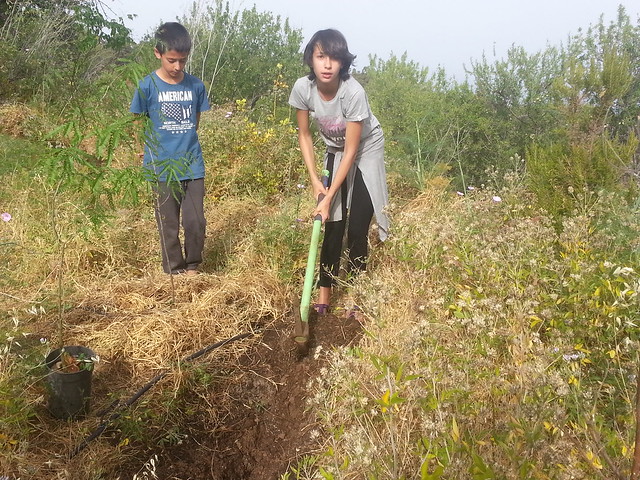
Guests & Friends
During this last period we also enjoyed a delightful visit by Hamza from Turkey (a childhood friend of Stella's) who stayed with his two children, Clemi & Alex.
Apart
from the extra fun we had with having two lively youngsters with us
(and the delicious home-made pizza evening they treated us to), Hamza
also gave us two great impromptu workshops on spiral dynamics and profiling,
which is something he uses professionally and that interests us very
much as integral permaculture designers, especially for community
building.
We saw everyone's personality
profiles in terms of the spiral dynamics model and discussed what the
various combinations mean for group work and communication dynamics.
Very interesting, thank you so much Hamza!
And Jose's Cuban grandparents come regularly, and they always bring us many presents and treat us to cooking a big meal for everyone.
Basic Income Weekend
As
well as the ecovillage project, the academy work & several
international integral permaculture projects, whenever we can we try to
work on projects to make our bioregion (the Island of La Palma) more
resilient in times of crisis and more sustainable in general.
In May we ran two weekends on the farm to launch a bioregional project to set up a complementary currency for the Island, see monedademos.es/lapalma. We particularly enjoyed the Skype conference we had with the originators in Gran Canaria, where our La Palma group could get to know their story and ask lots of questions.
We
combined these organizing workshops with a tour of the finca and
mini-introduction to integral permaculture, as well as walks in the
surrounding area & resting. It
was great to have space for people to stay overnight quite comfortably,
so we could live and eat together whist we got on with the work of
setting up the logistics for the project in a relaxed way. We hope to have more events like this in the future.
Fer's
creative cartooning work launched the project in a way, as it was the
poster he drew up during his iPDC course that first advertized the event,
then put some nice colour into the online presentation (in spanish) we all contributed to creating.
Thank you for everyone who made this happen! For a lovely event and for a very hopeful eco-economics project for our island. The more people realize how important this kind of wider bioregional connecting projects are, if we are to thrive in the uncertain future, and the more contribute time and energy to the work of creating these essential community infrastructures, the better.
Another Compost Toilet
| During
February-March, under Derek's talents skills and design, a group of
students & volunteers constructed this new compost toilet, of the
twin chamber design type - of which there are manuals you can download
from internet, see the e-book's page on Toilets.
for all your work on this construction - everyone enjoyed learning some extra building skills from doing this, very much.
|
 |
This new toilet was built on the edge of one of the garden terraces (Silva Garden) in order to
make use of the drop for containing two composting chambers: whilst one
is composting the other one is being filled, and when the compost is ready then the toilet bowl is
moved over the other chamber.
It has both sitting and squatting options (squatting is a much healthier way to poo, if you have the basic fitness to be able to hold this position comfortably) and we've placed it half-way between the camping site area and the buildings so that it can be used by both areas.
 |
 |
|
It has both sitting and squatting options (squatting is a much healthier way to poo, if you have the basic fitness to be able to hold this position comfortably) and we've placed it half-way between the camping site area and the buildings so that it can be used by both areas.
This
de luxe model joins our existing two types of compost toilets: the
chamber pot design (most mini-max of all although ours are a bucket with
sawdust that needs to be emptied only once per week - some of us have
these in our room) and the older compost toilet our very first permaculture students designed from scratch, next to the solar shower, beautifully drawn by Heloise:
Pigs Tractoring
The pig's tractoring has been quite impressive, and we're enjoying learning about keeping these beautiful creatures for the first time. It has been challenging at times, especially when they dig under the fence and get out - which they do any time we forget to feed them on time - and they want feeding 3 or 4 times per day - although it's usually so funny to get them back home (teamwork required) that we don't mind the entertainment.
Abora in January before pig tractoring

This is a forest compared to the neighbour's land behind it (paler green, with much shorter grass - they used to look exactly the same) thanks to the sheep and chicken tractoring in previous years.
|
Abora Garden in June after pig tractoring

This would be a tangle of dried weeds if it weren't for the pigs, who have also fertilized it considerably during their stay. What looks barren land right now (in the summer) will burst into lushness (even more than last year) after the first rains in autumn.
|
Piggie & Wiggie in February

We could pick them up & carry them when they arrived, they were the same size as our baby goat, and barely reached to our knees.

This is just an experiment for now: we're observing which animals are most effective in cycling nutrients and creating more fertility overall. We might not keep raising them, unless we figure out how to design the whole system to supply their needs and ours in a more mini-max way. But getting to know these delightful creatures is an amazing experience :)
|
Piggie & Wiggie in July
Now they are much heavier than us & quite impossible to move if they don't want to - so we're quite grateful they are very sweet tempered & calm!
The cardboard in the background protecst from the sun the large quantity of bananas that we get (for free) from the island's cooperatives (many tons are thrown away for not being 'commercializable') - their main food source, together with the abundance of fruit that our trees produce, especially in summer.
|
& Sheep Fertility
At the time of going to press ... we have 9 sheep + 1 goat, 4 of which are lambs which were born around mid-summer (and our Canarina is still pregnant - photos in the next newsletter!).
This spring we took more pictures of the intensive grazing experiments we're doing with them in the surrounding lands (which are noticeably more lush every year, since we've put the sheep on them).
This spring we took more pictures of the intensive grazing experiments we're doing with them in the surrounding lands (which are noticeably more lush every year, since we've put the sheep on them).
Our main job here (see our Mission) is to increase the fertility of the soil, to increase biodiversity and so repair the damage done by it having been used as farmland since it was colonized hundreds of years ago (farming being the most destructive activity ever invented by humans).
Originally this area
was a particular kind of forest (thermophilic forest: typified by palm-trees and dragos, which we've been re-planting, amongst other endemic & introduced edibles - all part of the forest garden we're creating) and the Awarita used to pass through here on their yearly
migrations with huge herds of goats and sheep.
The Awara, or Benahoaritas, are the original inhabitants of La Palma, who were exterminated and absorbed by the Spanish invasions in the 15th Century, and we remember and honor them on a daily basis with our work here, which builds on their wisdom - as they are the only humans that ever lived here in a truly sustainable way, in harmony with other species.
In the talk Jose gave at the New Economy Week conference last year (in spanish) he explains how and why we're experimenting with a
modern version of the same kind of intensive grazing the Awaras practiced.
Feedback
If you have any questions or comments on our news, we'd love to hear from you!
Do join us in the facebook group where you can comment, ask questions, etc.
You can join our email list if you want us
to keep you up to date with how the EcoVillage evolves
by clicking on the image
to keep you up to date with how the EcoVillage evolves
by clicking on the image
You can also email us at
hola@8thlife.org
Another beautiful image by Heloise to summarize what this is all about and why we are doing it :)









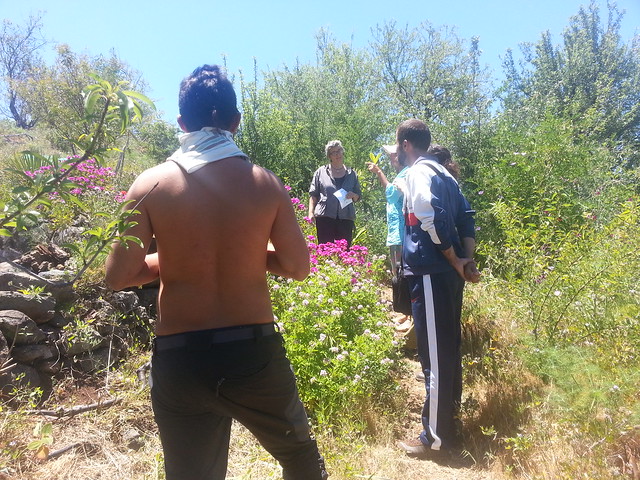
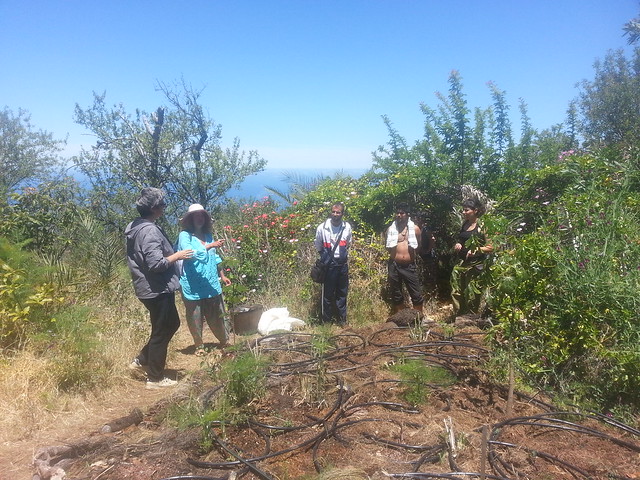
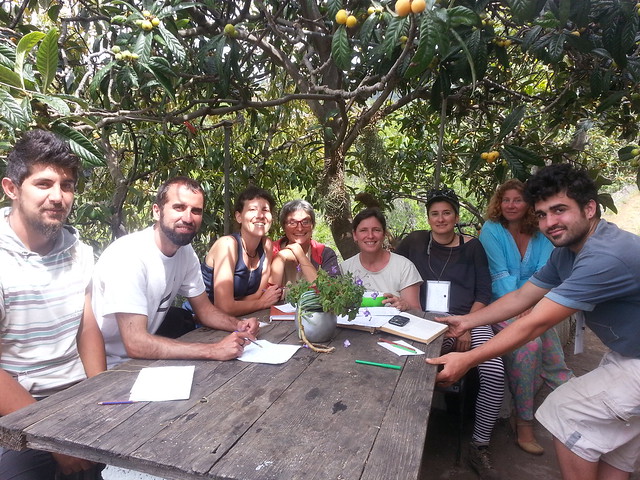


















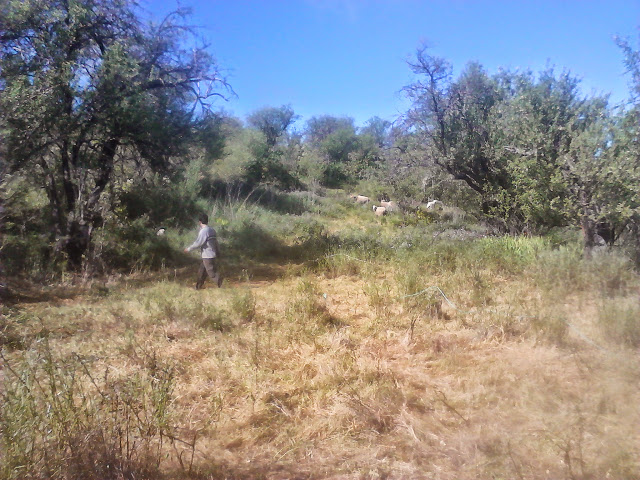
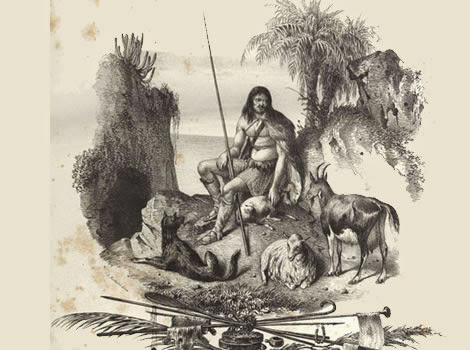








No comments: